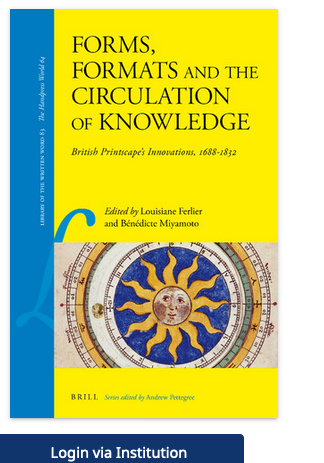The book has a cover!
The Library of the Written Word has switched online for the @Brill_History standard placeholder to this beautiful #volvelle, image courtesy of @royalsociety
Louisiane Ferlier and I are over the moon ... #Bookhistory #twitterstorians

The Library of the Written Word has switched online for the @Brill_History standard placeholder to this beautiful #volvelle, image courtesy of @royalsociety
Louisiane Ferlier and I are over the moon ... #Bookhistory #twitterstorians


More to come, but our deepest thanks to our Volume 83 authors James Raven, Jeffrey Hopes, Rebecca Schoff Curtin, @ijalexander2002 , Yvonne Cornish, @katieparker18th , @cgspence , James P. Ascher, Jacqueline Reid-Walsh, and David Duff. Its been wonderful!
The volume is the result of conferences: Forms and Formats - Experimenting with Prints @bodleianlibs @OrielOxford @JesusCollegeLib thanks to the support of Centre for the Study of the Book and @w758
bodleian.ox.ac.uk/?a=151534
bodleian.ox.ac.uk/?a=151534
And #Copyright and the Circulation of Knowledge @Sorbonne_Nvelle @USN_Recherche support from @crewparis3 @LarcaParis @InstUnivFr @royalsociety thanks to @w758 @eavrilP3 @sarahpickard2 univ-paris3.fr/copyright-and-…
☝🏻Soon to be published in october, thanks for the retweet @ECFjournal ! Forms, Formats and the Circulation of Knowledge brill.com/view/title/579…
• • •
Missing some Tweet in this thread? You can try to
force a refresh









